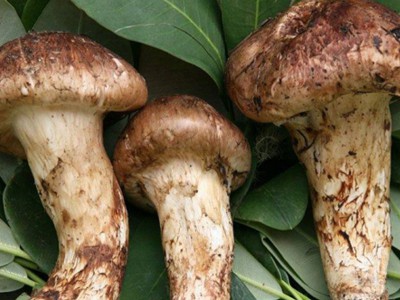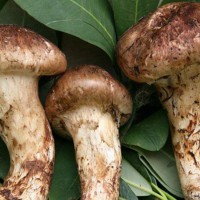Matsutake mushroom is a valuable edible mushroom. Tricholomaceae, Tricholoma genus. The cap is hemispherical when young, live white, with yellowish-brown to chestnut-colored fine scales on the surface, with curled edges. The flesh is white and thick. The gills are white or slightly creamy yellow, slightly dense, curved and unequal in length. The stalk is cylindrical, solid inside, white above the fungus ring, with powder, and the same color below the fungus ring, with fresh flakes. The fungus ring is born on the upper part of the stalk and is filamentous. The spore prints white. The spores are colorless, smooth, broad elliptic to nearly spherical, 6.5-7.5 μm×4.5-6.2 μm. It grows in pine forest or needle and broad-leaved mixed forest in autumn in nature. China is mainly produced in Northeast China and provinces such as Taiwan, Yunnan and Guizhou. Cannot be cultivated artificially. The flesh is thick, fragrant, and delicious.
According to experts, judging from the shape and smell, the caps of Matsutake mushrooms are well-proportioned and do not go up or down. The caps of Agaricus blazei Murrill are obviously big and small and uneven. The shape of Agaricus blazei is black cap and white feet. The overall color of matsutake is red chestnut, the smell of matsutake is delicate, and the smell of Agaricus is more pungent.
There is also a wild mushroom that looks very similar to Matsutake, commonly known as Flower Matsutake or Matsutake. Its production season is the same as that of Matsutake, which is also from May to December each year. To distinguish from the color, the color of matsutake is chestnut, while the color of Matsutake is dazzlingly red, which may be mistaken for fresher matsutake. In addition, the texture and fiber of matsutake are straight silk. The lines are clear and very smooth, and the lines of Matsutake mushrooms look fluffy.










